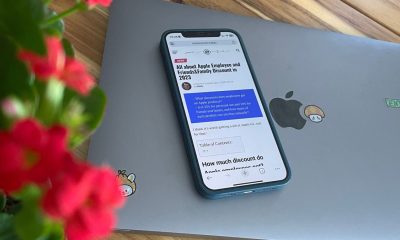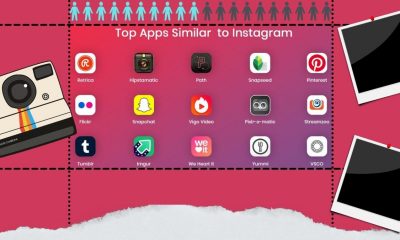Software Development
Minimum Marketable Product Definition and Key Development Steps
The Minimum Marketable Product, or MMP, is the bare minimum product or service that you need to create in order to test the market and validate your business idea. Developing an MMP is a key early step in any startup journey – it allows you to focus on the core features that are most important to your customers, while keeping costs and development time low.
In this post, we’ll walk you through the process of defining and developing your own MMP. By the end, you’ll have a clear understanding of what an MMP is, why it’s important, and how to create one for your business. Let’s get started!
What is a minimum viable product?
A Minimum Marketable Product (MMP) is a more developed version of the MVP and it is ready to be sold to customers.
A minimum viable product (MVP) is a product with just enough features to satisfy early customers and provide feedback for future development.
The key objective of an MVP is to test the hypothesis that a particular set of features or functions will be valued by users.
An MVP is not about creating the finished product — it’s about quickly learning what works and what doesn’t so that you can focus your development efforts on the features that will have the greatest impact.
There are a few different ways to approach MVP development, but the most important thing is to start with a clear hypothesis that you want to test. Once you have your hypothesis, you can determine which features are essential to include in your MVP and which can be left out.
The following are four key steps in developing an MVP:
1) Define the problem you are trying to solve and who your target market is.
2) Identify the key feature(s) that will solve the problem for your target market.
3) Develop a prototype of your MVP with the essential feature(s).
4) Test your MVP with a small group of target market users to get feedback and make necessary adjustments.
What are the key development steps for a minimum viable product?
There are a few key development steps that are essential for any minimum viable product (MVP). These steps ensure that the product is able to meet the basic needs of the target customer while also being able to gather feedback and data that can be used to improve the product.
The first step is to define the problem that the MVP will be solving. This is essential in order to ensure that the MVP is focused on solving a specific problem and is not trying to do too much. Once the problem has been defined, the next step is to determine who the target customer for the MVP will be in your Startup. This helps to ensure that the MVP is designed with a specific customer in mind and can be tailored to their needs.
After the target customer has been identified, the next step is to determine what features are absolutely essential for the MVP. This ensures that only the essential features are included in the MVP, which helps to keep costs down and makes it easier to test and gather feedback on the product. Once the essential features have been identified, they need to be implemented in a way that allows for testing and feedback. This could involve creating a prototype or using a existing product and adding new features to it.
Once the MVP has been created, it needs to be launched and tested with real users. This allows for gathering valuable feedback about how well the product solves the problem it was designed for and what improvements can be made. Based on this feedback, iterative changes can be made to improve the product until it meets all of its goals.
How can a minimum viable product help your business?
Developing a minimum viable product (MVP) is an important step in bringing a new product or service to market. An MVP is a version of your product or service that has the minimum necessary features to satisfy early adopters and help you validate your business idea.
Building an MVP can help you:
- Save time and money: Developing an MVP allows you to test your concept quickly and cheaply without incurring the costs of developing a full-fledged product.
- Validate your idea: An MVP can help you gather feedback from customers and target markets to validate your business idea.
- Attract investors: Having an MVP can make it easier to secure funding from investors as it shows that you have a viable product or service.
To develop an MVP, start by identifying the core features of your product or service that are essential to its success. Once you have identified these features, work on developing a prototype or beta version of your product that includes these essential features. Once you have developed your MVP, pilot it with a small group of users to get feedback and make necessary adjustments before launching it to the wider public.
What are some examples of minimum viable products?
A minimum viable product is a version of a product with just enough features to be usable by early customers who can then provide feedback for future product development.
MVPs are often used in the software development industry as a way to validate whether a product idea is worth pursuing. They can also be helpful in situations where resources are limited and there is a need to get a product to market quickly.
Examples of minimum viable products can include anything from a simple landing page with contact information to an interactive prototype of a new app. The key is that the MVP has just enough functionality to allow early adopters to provide feedback that can be used to improve the final product.
Some common features of MVPs include:
-A simplified user interface
-Limited functionality
-A small subset of features
-Basic design and branding
How do you develop a minimum viable product?
To create a minimum viable product, you need to focus on creating a product with just enough features to satisfy early customers and provide feedback for future product development. This requires getting a validated learning about the product and its underlying technology. There are key development steps that will help you create a minimum viable product.
- Ideation: The first step is to generate ideas for your product. This can be done through market research, customer interviews, and brainstorming sessions with your team.
- Prototyping: Once you have some ideas, you need to develop them into prototypes. This will help you get feedback on the feasibility of your ideas and allow you to make changes before committing to developing the final product.
- Testing: Once you have a prototype, it’s time to test it with potential customers. This will help you validate your assumptions about the product and get feedback that you can use to improve the final product.
- Launch: After testing and refining your product, it’s time to launch it to the public. This is when you start collecting data about how people are using your product and what improvements can be made.
What are the benefits of a minimum viable product?
Building and releasing a minimum viable product, or MVP, is often seen as a key step in the product development process. An MVP is a product with just enough features to be playable and useful, but not so many features that it becomes bogged down or too complex.
There are several benefits to releasing an MVP:
- It allows you to get feedback from users early on, so you can make changes and iterations based on real user data instead of guesses.
- It helps you learn what features are actually used and important to users, so you can focus on developing those features further.
- It can be used to test market demand for a product before investing too much time and money into development.
- It allows you to show potential investors that there is interest in your product and that you are capable of delivering on your vision.
What are the challenges of developing a minimum viable product?
There are several challenges to developing a minimum viable product. The first is identifying which features are absolutely essential and which can be cut. This can be difficult, as it requires a deep understanding of the customer and what they value.
The second challenge is developing the product quickly enough to test it on the market. This means balancing the need for speed with the need for quality.
Finally, once the product is on the market, it can be difficult to get feedback from customers. They may not be willing to give honest feedback if they don’t see the product as finished. This means that it can be difficult to iterate and improve the product based on customer feedback.
How do you know when you have a minimum viable product?
You’ve probably heard of the minimum viable product, or MVP. The MVP is a product with just enough features to be able to be released to early customers and gather feedback for further development. But how do you know when you actually have an MVP? This article will give you a clear minimum viable product definition and guide you through the steps of developing one.
A minimum viable product has three key characteristics:
- It has enough value that people are willing to use it or buy it, even if it is not perfect.
- It is ready for release. That means it has been tested and there are no major bugs.
- It gathers feedback from early users that can be used to improve the product.
Creating an MVP involves these development steps:
- Ideation: Brainstorming potential features for your product
- Selection:Choosing which features will be included in the MVP
- Development:Building the MVP
- Testing:Testing the MVP with real users
- Launch:Releasing the MVP to the public
- Feedback:Gathering feedback from users and using it to improve the product
-

 Marketing Tips2 days ago
Marketing Tips2 days agoWhat is my Instagram URL? How to Find & Copy Address [Guide on Desktop or Mobile]
-

 Business Imprint4 days ago
Business Imprint4 days agoAbout Apple Employee and Friends&Family Discount in 2024
-

 App Development3 days ago
App Development3 days agoHow to Unlist your Phone Number from GetContact
-

 News5 days ago
News5 days agoOpen-Source GPT-3/4 LLM Alternatives to Try in 2024
-

 Crawling and Scraping5 days ago
Crawling and Scraping5 days agoComparison of Open Source Web Crawlers for Data Mining and Web Scraping: Pros&Cons
-

 Grow Your Business2 days ago
Grow Your Business2 days agoBest Instagram-like Apps and their Features
-

 Grow Your Business5 days ago
Grow Your Business5 days agoHow to Become a Prompt Engineer in 2024
-
Marketing Tips2 days ago
B2B Instagram Statistics in 2024



